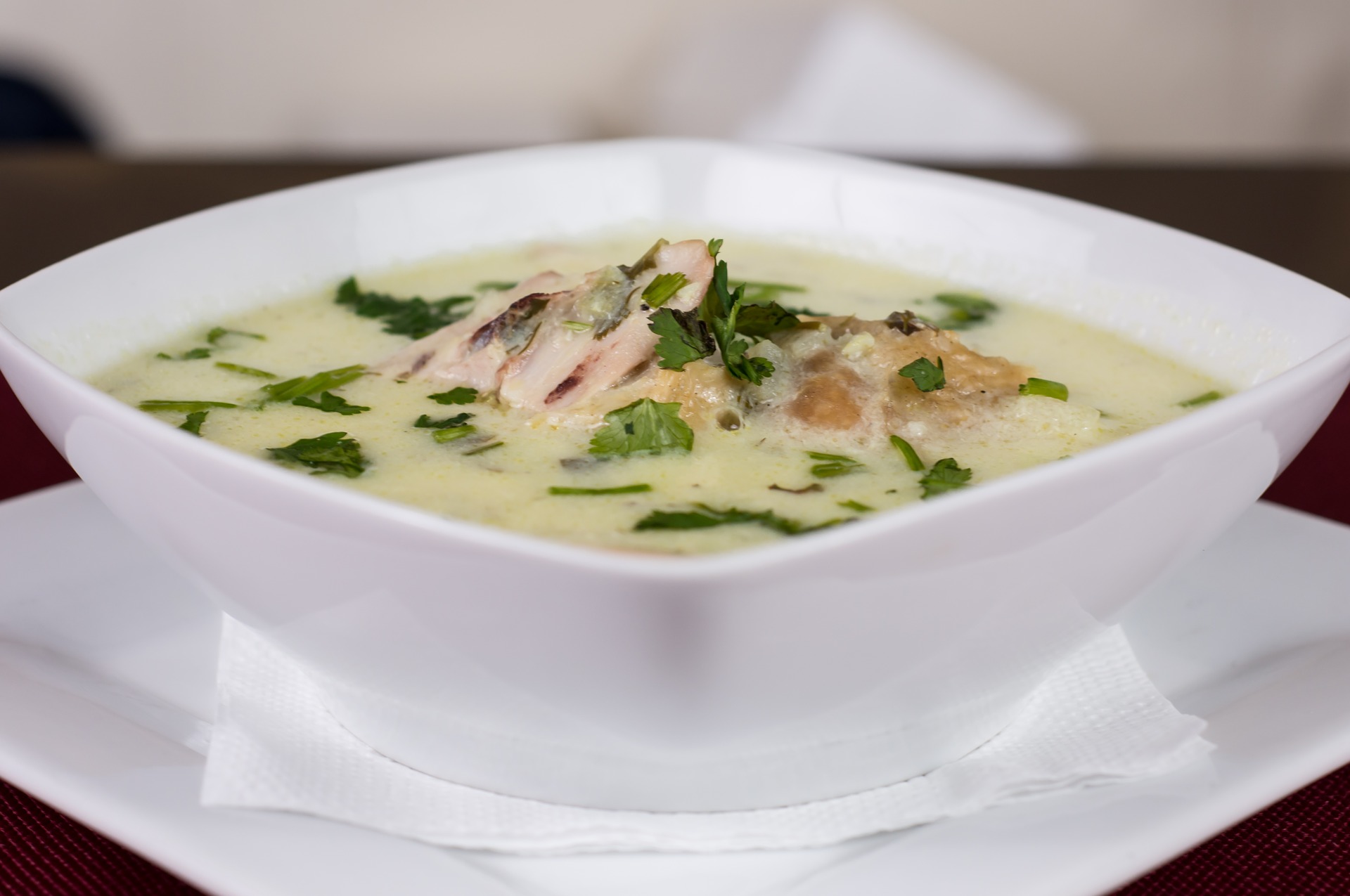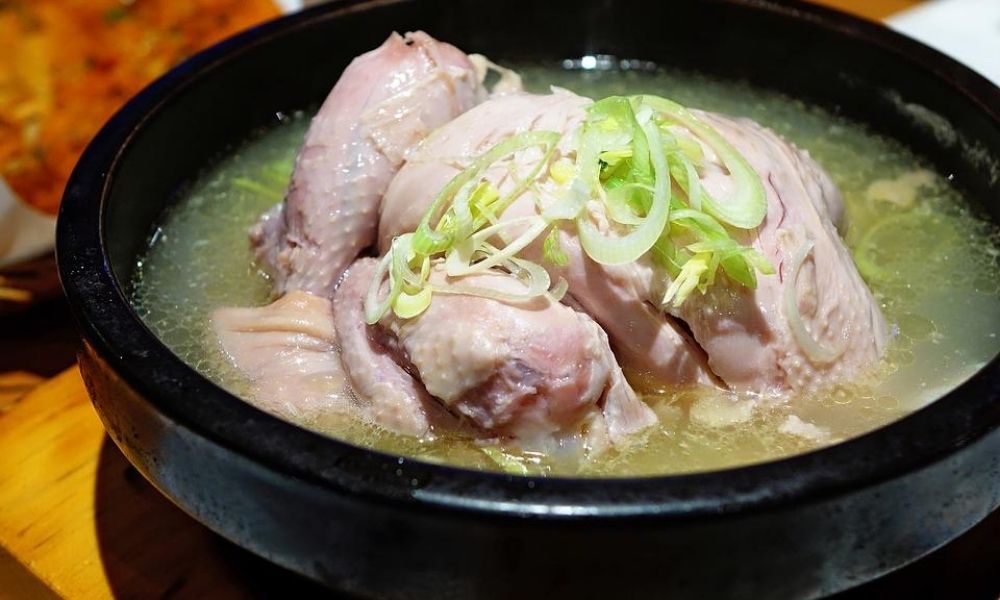There will be very few kitchens that do not have a pressure cooker. We all have once prepared many meals on woodfired stoves with brass and iron utensils. The pressure cooker is now as common in every home as a standard coffeemaker or blender. These countertop appliances that save time and energy have changed how we all cook, often for the better.
Chicken is still the most popular protein in the United States, and the Instant Pot allows you to prepare various chicken dishes on a busy weeknight. Even better, the quick pressure cooking keeps chicken — particularly chicken breasts, which can become dry, tough, and stringy when cooked in other ways — tender and juicy.
Here are Some of Our Favourite Pressure Cooker Chicken Recipes
Chicken Stock
Making stock in a regular pot takes hours; however, making stock takes only 30 minutes when using a pressure cooker. No canned or packaged chicken broth compares to this flavorful, all-natural stock. It can be served simply as broth, flavored with rice or noodles, carrots, and celery, or used in dozens of recipes that call for broth or stock (stock, to be sure, produces a much tastier dish than plain water).
You can freeze the stock in various sizes for later use, including one-third cup (80 ml), one cup (250 ml), and other sizes.
Stocks serve as the foundation for countless dishes in a variety of cuisines. Chicken stock is one of the most popular and adaptable stocks in Western cooking, and it is made by infusing water with the flavours of chicken, fresh root vegetables, and herbs. Good restaurants always make their stocks, which is why their dishes have that richer, deeper, “restaurant-quality” flavour!
Chicken Bouillabaisse
Chicken Bouillabaisse is a less expensive version of the classic seafood stew. It’s so lush and luxurious that it’s suitable for serving guests!
You’ve probably heard of the seafood version of bouillabaisse, Marseille’s signature dish. The seafood version is typically prepared for a large group of people and includes at least three different types of seafood, and it can be pricey due to the seafood.
The flavours of the classic seafood version combine well with the less expensive chicken in this Chicken Bouillabaisse, which is also easier to prepare. Consider it a French chicken stew.
Chicken Salad
The tablespoon of plum preserves added to the mayo-based dressing is the “secret sauce” of this chicken salad. You could use any berry jelly or jam, but mom prefers plum jam because we always have plenty on hand (thanks to several plum trees).
With a squeeze of lemon juice, you can balance out the sweetness of the jam.
The result? Wonderful!
If you wait to add the lettuce until right before serving, you can make this salad a day or two ahead of time. The salad will stay in the fridge for several days, but the lettuce will lose its crunch and become wilty, so if you expect to have leftovers, leave it out.
Chicken and Rice
We all have those dishes that never require following a recipe. In your mind, the flavours mingle. They are simply a part of who you are and what you know. The dish appears in front of your eyes due to habit and familiarity. It’s like a dance you’ve always done. You don’t consider it, and you do it.
These kinds of dishes are usually our go-to comfort foods. Food from our childhood. The process of doing something routine, regular, and familiar provided comfort in addition to the enjoyment of the food itself.
This Chicken and Rice recipe is the epitome of comfort food. It’s a pleasure to have grown up with it, watching your surroundings and your mother make it, and now to be able to share it with your loved ones. It’s unique.
Chicken Curry
Every family in India has their chicken curry recipe, and it’s rustic, spicy, flavorful, and ridiculously delicious.
It is a time-consuming and labour-intensive curry recipe, just like any authentic dish. Is it, however, worthwhile? We’d say unequivocally YES!
This traditional Indian chicken curry and a lazy Sunday afternoon are made for each other.
We have this chicken curry situation every Sunday. Our Sunday lunch is always a blissful experience, with steamed basmati rice on the side, sliced onion salad, and plenty of soupy, spicy Indian chicken curry.
To cool off the heat of the spices during the summer, we’ve added a chilled raita bowl to this Sunday menu. Or a tall glass of masala buttermilk to help the spices settle.
You might enjoy this recipe. because it is a traditional curry that will introduce you to authentic Indian flavours
It is a simple one-pot recipe that is highly adaptable. No chicken marination is required for this curry recipe, and all the masalas are made from scratch home.
Lemon Chicken
The simple lemon chicken recipe is ideal for a weeknight meal! It’s not too lemony, but it’s just right. It has garlic, butter, lemon, thyme, and rosemary.
Lemon is acidic, which helps balance the dark meat’s stronger flavour in the thighs and legs and the fat from the chicken skin.
Of course, if you prefer, you can use chicken breasts. You may not need to cook them as long as thighs, depending on the size of your pieces.
Do you dislike the skin? Everyone does not. If possible, cook with the skin on. Cooking with the skin on not only keeps the meat from drying out but also bathes the chicken in the flavour of the skin as it cooks.
This recipe has been one of the most popular on Simply Recipes. It’s simple to make—just a marinade of lemon zest, lemon juice, garlic, and herbs, followed by baking in the oven.
And the flavour is perfect! It’s not so lemony that your mouth puckers, and this dish pairs well with rice, buttered noodles, angel hair pasta, or mashed potatoes.
Chicken Cacciatore (Boneless)
Chicken cacciatore normally requires 60 minutes of simmering time to achieve the rich flavours, but only 9 minutes with a 15 psi pressure cooker.
A classic of Italian cuisine in a much more manageable form! Indeed, as the name implies, this Boneless Chicken Cacciatore contains no bones or inedible parts that would inevitably force you to pick your food, allowing you to focus on one thing: enjoying your meal in all its glory!
Serve your Boneless Chicken Cacciatore over cooked pasta (or rice, mashed potatoes, cauliflower rice, or steamed vegetables if you want to keep things clean!) and, if desired, garnish with additional fresh parsley.
Chicken Cacciatore (Bone-in)
This is a slight variation on the previous chicken cacciatore recipe, in which chicken pieces are used instead of boneless chicken breast. Chicken cacciatore takes about 60 minutes to simmer to get the rich flavours, but it only takes 9 minutes in a 15 psi pressure cooker.
Authentic Chicken Cacciatore is an Italian classic, and you won’t find a more succulent home-cooked meal than this! Cacciatore aromas fill your entire house with comfort and warmth as it cooks itself on the stove or in the oven! It’s simple to make and loved by the entire family!
Cacciatore means “hunter” in Italian, and all cacciatora means “hunter-style” meal, which includes chicken (or rabbit), onions, tomatoes, herbs, vegetables, and usually wine or vinegar.
The flavours are even better the next day if there are any leftovers! You can also freeze it in meal prep containers for up to three months for a ready-made meal whenever you need it!
How can I Determine the Maximum Capacity of my Pressure Cooker?
Unfortunately, many pressure cookers do not have internal markings to indicate these maximums. If your pressure cooker does not have this feature, fill it with water to visualize the location. For example, my unmarked 6L Fagor Futuro is 2/3 full when the water is just under where the handles attach and 1/2 full when the water is just above where the round bottom begins to go straight.
Is it Possible to Overcook Chicken in a Pressure Cooker?
Because we cannot check the temperature or level of doneness during the cooking process, it is very easy to overcook chicken breast in a pressure cooker. Once upon a time, we overcooked a chicken breast in a pressure cooker to the point where the food thermometer read more than 200°F.
Do Chefs Make Use of Pressure Cookers?
It remains to be seen whether pressure cooking will become more popular among chefs, but many do not use it in restaurants. This is largely due to their inability to monitor and adjust the flavor, making using other cooking methods more convenient.
How to Make Roasted Chicken Bone Stock?
The first method requires several hours of slow cooking and uses leftover chicken carcass bones and vegetables (which are practically free). We frequently use this method after roasting a chicken and having a leftover carcass. It’s an excellent way to prevent good bones from going to waste.
What is the Best Way to Make Chicken Stock from Sautéed Bones?
In the second method, we begin with chopped raw chicken backs and/or wings that have been sautéed to brown for flavour. Then add the onion, carrots, parsley, and leeks or onion greens, and cover with cold water. We let this simmer for 4 to 6 hours before straining.
Conclusion
Our favorite Pressure Cooker chicken recipes are quick and simple to prepare, which is why we adore them. The Pressure Cooker allows you to cook not only the chicken but also sauces, noodles, or rice in one pot. These recipes are delicious and, as previously stated, simple to prepare. We hope you found this article interesting.

